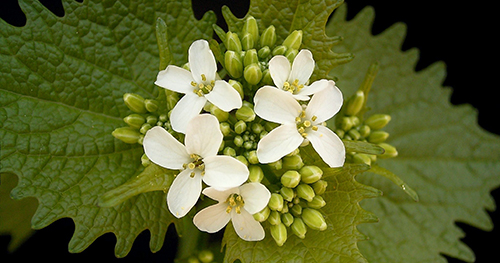PhD defense: Tina Frisch
Title of PhD thesis
The complexity of bioactive natural products in plants - On the co-occurrence of hydroxynitrile glucosides and glucosinolates
Summary
Plants produce a diverse range of bioactive natural products promoting their fitness. These specialized metabolites may serve as chemical defence against herbivores and pathogens and may inhibit the growth and development of competing species. Hydroxynitrile glucosides and glucosinolates are two classes of defence compounds, which have diverging properties, but also share common biosynthetic features. Hydroxynitrile glucosides are produced in species across the plant kingdom, whereas glucosinolates are found almost exclusively within the Brassicales, which generally does not contain hydroxynitrile glucosides. This division has raised questions regarding possible evolutionary relationships between the biosynthetic pathways. The very rare co-occurrence of hydroxynitrile glucosides and glucosinolates found in Alliaria petiolata (garlic mustard, løgkarse) and Carica papaya (papaya) makes these two plant species interesting gateways for addressing these questions of evolution. The presented research demonstrates that the biosynthetic pathway for the hydroxynitrile glucoside alliarinoside in A. petiolata does not follow the general scheme for hydroxynitrile glucoside biosynthesis in other species. Instead, the aglucon of alliarinoside is formed from metabolism of the glucosinolate sinigrin. Hence, in A. petiolata the route to hydroxynitrile glucoside biosynthesis results from convergent evolution. Based on conducted research it is briefly discussed, if the co-occurrence in C. papaya also results from convergent evolution and involves glucosinolate degradation in living tissues. The reported investigations in A. petiolata uncover a remarkably diversified glucosinolate metabolism including thiocyanate-derived cyanogenesis and alliarinoside, which is effective against glucosinolate-adapted specialists. This expanded chemical arsenal is likely a key factor contributing to the spread of A. petiolata as an invasive species in North America.
Supervisors
Professor Birger Lindberg Møller
Postdoc Nanna Bjarnholt
Assessment Committee
Professor Dr. Ute Wittstock, TU Braunschweig, Germany
Assistant Professor Dr. Markus Piotrowski, Ruhr-Universität Bochum
Professor MSO Søren Bak, University of Copenhagen (Chair)
Reception
The defence will be followed by a reception in room M117, Thorvaldsensvej 40, 1st floor, 1871 Frederiksberg
Everybody is welcome!
Details
Time: February 3rd, 2014, 13:00-17:00
Place: Festauditoriet, Bülowsvej 17, 1870 Frederiksberg C
Reception: M117-1
Contact
 Tina Frisch
Tina Frisch
tifri@plen.ku.dk
+45-35333315

